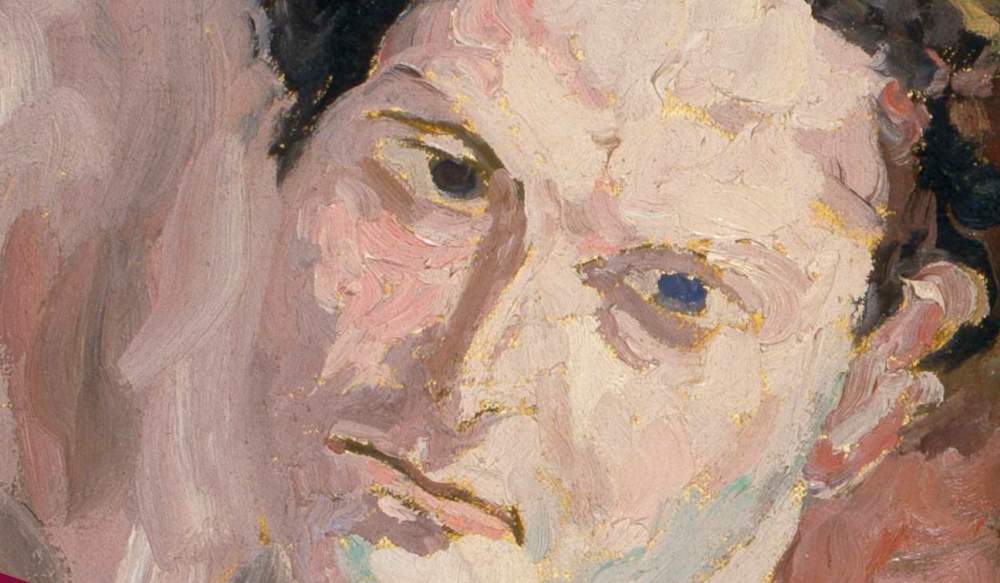From February 9 to March 19, 2023, Palazzo Medici Riccardi in Florence’s Sale Fabiani is dedicating an exhibition to Carlo Levi. Curated by Pino Mantovani on a project of the Carlo Levi Foundation and promoted by the Metropolitan City of Florence with the patronage of the Region of Tuscany, the Municipality of Florence and the City of Turin, organized by the Giorgio Amendola Foundation in collaboration with the Carlo Levi Foundation, the Unesco Center and the MUS.E Association, the exhibition Carlo Levi in Florence. A Year of Underground Life will feature thirty-four works and drawings, as well as a reproduction of the famous canvas Lucania ’61.
The exhibition is dedicated to Carlo Levi’s Florentine sojourn between 1941 and 1945, in the dark period of the war years and Nazi occupation until the Liberation struggle, the resumption of democratic public life in the city liberated by the Resistance under the autonomist government.
In Florence, in the last year of World War II, Levi wrote his first and best-known book, Christ Stopped at Eboli, in which he evokes faces, stories and characters from his confinement in Grassano and Aliano in Lucania: a shattering experience that led him to the discovery of another Italy, the peasant and archaic Italy confined to a South living outside the times of history and struggling to relate to the imperial mythology imposed by Fascism.
On display are the works painted during his confinement in Aliano (1935-1936, Tonino, Dietro Grassano, La Strega e il bambino, La figlia scarmigliata della Strega), an antecedent on the basis of which the novel will reconstruct the weight and meaning of that experience that would mark Levi’s life as a southern writer, painter and politician. All around is a gallery of portraits, his mother, beloved women and friends; his companion of the time Paola Levi Olivetti, beloved and many times evoked on the canvas, for whom he decided to move to Florence, abandoning the hypothesis of an expatriation to America. Then Anna Maria Ichino, the generous partisan who took him in the refuge of Piazza Pitti 14 and who loved him selflessly for a brief season. Enclosed in this new Florentine “confinement,” Levi portrays and weaves relationships with the great protagonists of the anti-fascist intellectual world that was concentrated in Florence: the sculptor Alfieri, the painter Colacicchi, the literati Montale, Bazlen and Cancogni, the psychiatrist writer Mario Tobino, and Leone Ginzburg, who would die in the summer of 1944 at the Nazi-Fascist hands. In the background of these tragic years stands an irredeemable world, which the painter evokes with a skinned kid lying on a livid beach (La guerra partigiana), with desolate landscapes reddened by the fires of war, with piles of corpses lying in a presentiment of the Holocaust (Nudi. Il lager presentito).
In the early 1950s Carlo Levi made a series of trips to southern Italy in which he breathed the climate of civil passion, of the struggles of the peasant-workers who were now aware of their miserable condition and demanded social redemption. Born in painting are the works of social denunciation, of explicit neo-realist orientation, showing the bodies of women deformed under the weight of toil, the eyes of children hollowed out by malaria, the faces of men marked by disease. A painting that the viewer rejects because of its “unpleasantness,” but which at the same time becomes experience by making him a witness to what is happening. The bond that was established between Levi and the South years earlier has now been solidified. Here are the Revolutionary Peasant Women, The Grandfather, the Calabrian Peasant Woman, but also the protagonists who fought for justice, such as Salvatore Carnevale, a Sicilian trade unionist killed by the Mafia, and the sociologist-activist of nonviolence Danilo Dolci.
The exhibition will also feature a reproduction of the famous canvas Lucania ’61, commissioned to the artist by Mario Soldati to represent Basilicata in the Pavilion of the Regions exhibition in Turin on the occasion of the celebrations for the Centenary of the Unification of Italy, kept at the National Museum in Matera. The work summarizes Levi’s entire vision of the southern question filtered through the story of Rocco Scotellaro: “the poet of peasant freedom,” to whom Levi owes his understanding of peasant struggles and meridionalist thought. The reproduction, made on a 1:1 scale, is from the headquarters of the Giorgio Amendola Foundation and Lucanian Association in Piedmont, Turin.
For info: www.palazzomediciriccardi.it
Hours: Monday through Sunday from 9 a.m. to 7 p.m. Closed Wednesdays.
 |
| Palazzo Medici Riccardi dedicates an exhibition to Carlo Levi and his Florentine sojourn |
Warning: the translation into English of the original Italian article was created using automatic tools. We undertake to review all articles, but we do not guarantee the total absence of inaccuracies in the translation due to the program. You can find the original by clicking on the ITA button. If you find any mistake,please contact us.